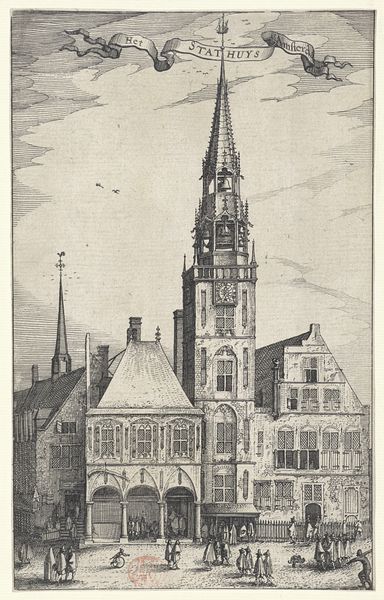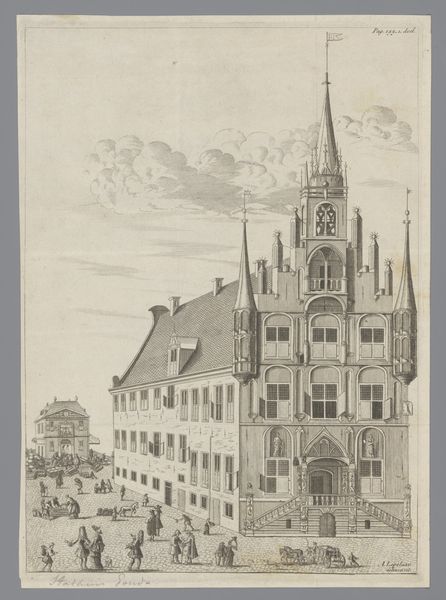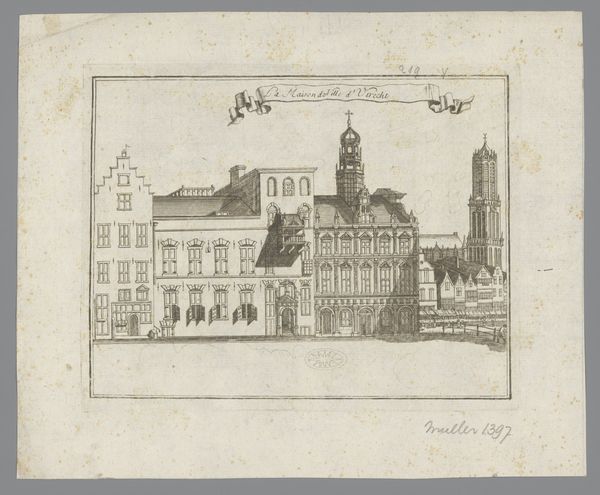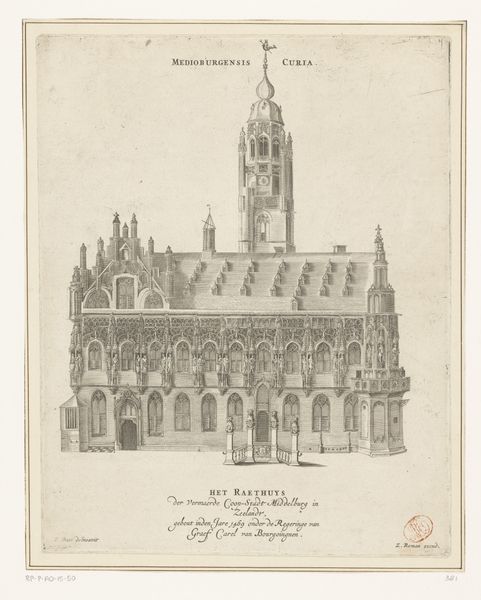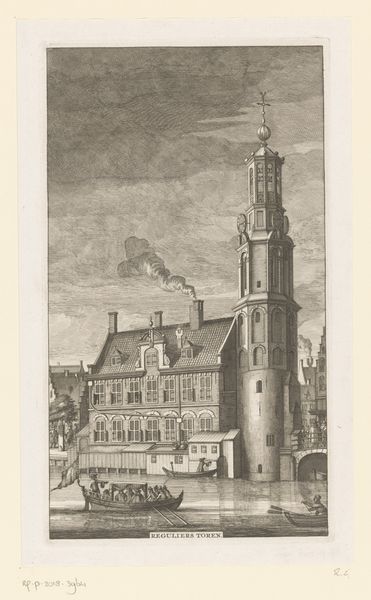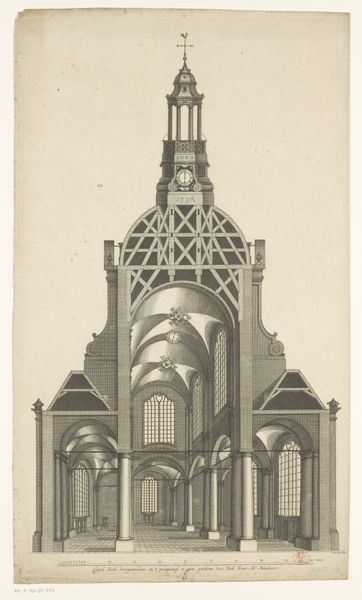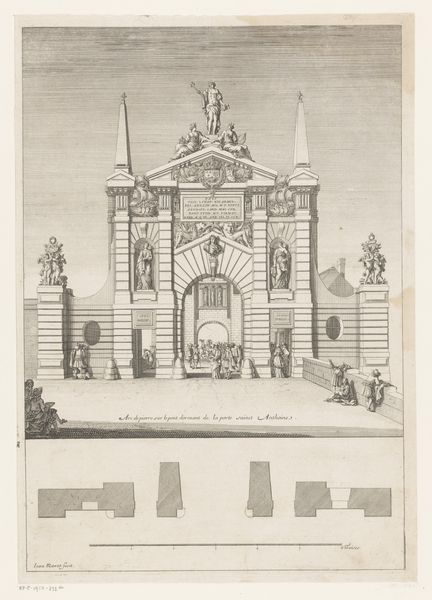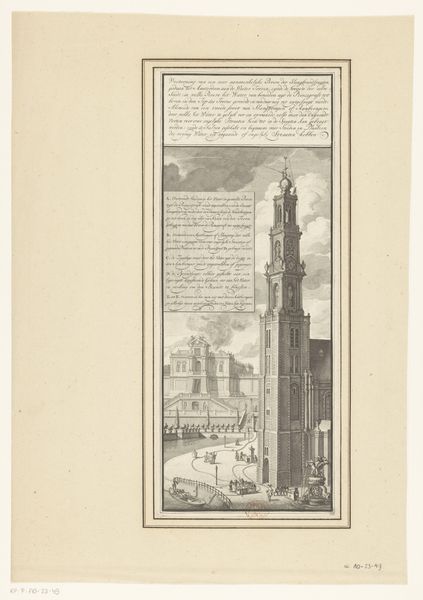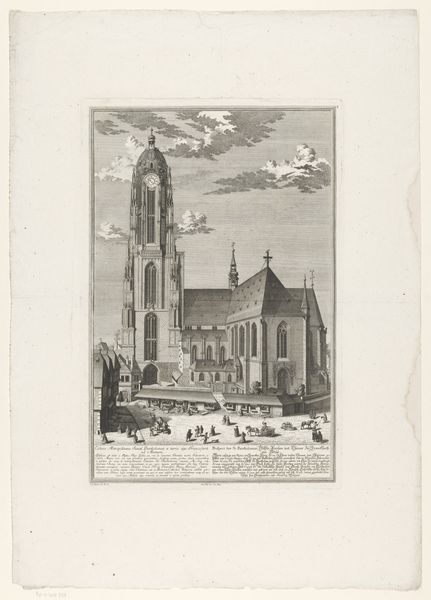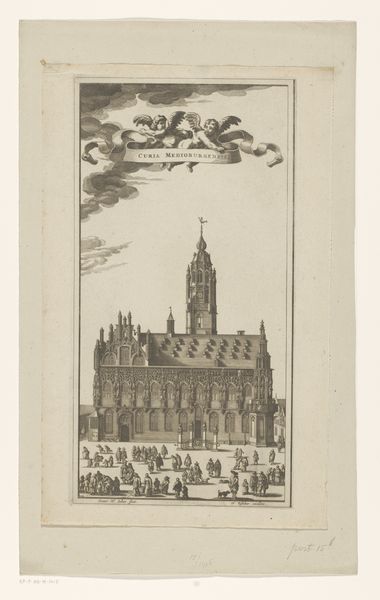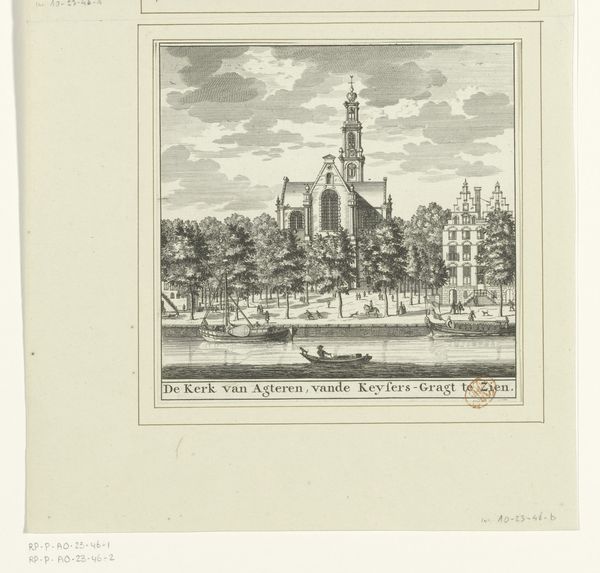
Dimensions: height 36.7 cm, width 27.2 cm
Copyright: Rijks Museum: Open Domain
Curator: Before us, we have "De Prins," an engraving dating back to 1937. Its fine lines depict a cityscape under snow, created to commemorate the wedding of Princess Juliana and Prince Bernhard. What are your first impressions? Editor: Well, I’m immediately drawn in by the intricate detail—it’s like stepping into a fairy tale, but one tinged with the formality of royalty. The snow softens the scene, yet the architecture is quite imposing, hinting at the weight of history and tradition. Curator: Precisely. The architectural choice itself carries symbolic weight. The New Church in Delft, represented in the image, is where members of the Dutch Royal Family have been traditionally interred, acting as both the wedding location, and subtly acting as a site laden with memories of legacy. It blends civic pride with personal history. Editor: And those flags flanking the cityscape—they feel like symbolic gatekeepers, almost guarding the royal couple's future. Their arrangement seems very staged and controlled. Is there a tension there between public duty and private happiness, perhaps? Curator: I think that’s insightful. The image doesn't only celebrate the union, it proclaims the couple's place within a larger national narrative. The bells above the skyline signify joyous news, however are visually tied to the flags and therefore tied to this duty that is bestowed upon the newly married couple. Editor: It is striking how graphic it is and that there are clearly reproduced lettering styles as the text about the wedding takes up much of the cover, but in an artistic way. As a whole it does manage to walk that very thin line that royalty often tows between an archaic image, a celebration, and a PR announcement. Curator: Indeed. There is certainly a level of pageantry to this piece. It acts as an enduring symbolic marker of a historical event, not merely for those who directly remember it, but also future generations who come to see it as part of a broader tapestry of national identity and iconography. Editor: Seeing it this way definitely casts the print in a richer, more profound light for me. A seemingly simple announcement, really dense in the story it tries to convey. Curator: For me as well.
Comments
No comments
Be the first to comment and join the conversation on the ultimate creative platform.

